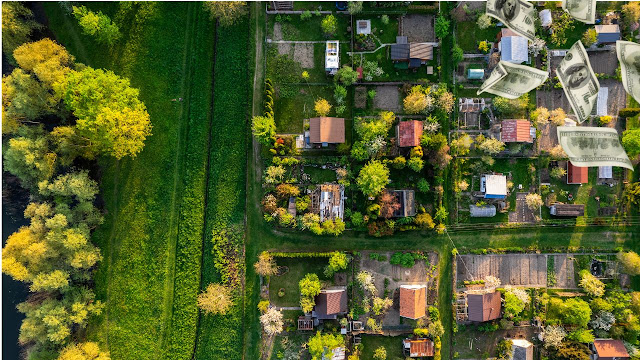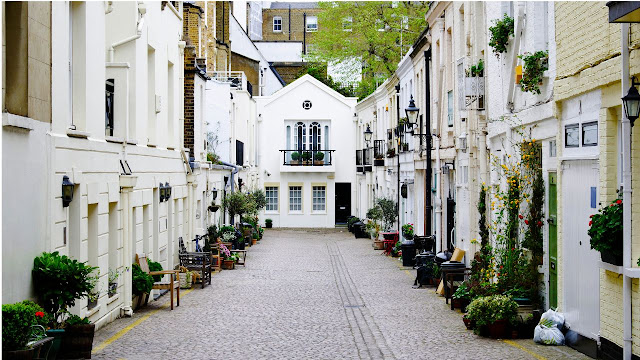- Get link
- X
- Other Apps
- Get link
- X
- Other Apps
Urban greening, the process of increasing and preserving green spaces like parks and gardens within urban environments, is often hailed as a key strategy for improving city dwellers' quality of life and combating climate change. However, a closer look reveals that these initiatives might not be as environmentally friendly as they seem. This article explores the hidden environmental costs of urban greening and suggests a paradigm shift towards nature-based solutions.
Urban green spaces, including parks, open areas, and private lawns, are undeniably beautiful and enhance our mood and general well-being. However, these spaces are often created and maintained with a human-centered mindset, prioritizing aesthetics over ecological functionality. This approach results in a "washed-out" version of natural ecosystems, which can have significant environmental impacts.
Urban green spaces are often maintained to look nice, not to function as a natural ecosystem. This approach can lead to a loss of biodiversity, as these spaces are not conducive to the survival and procreation of various insects and birds. This lack of biodiversity can lead to animal control problems, such as overpopulation of certain species and the disappearance of others.
Moreover, the human intervention required to maintain these spaces disrupts the natural ecological cycle, turning it into a linear process that creates waste at each stage. This waste comes in various forms, from greenhouse gases to an overabundance of certain species, such as rats, and decomposers, such as mold.
To address these issues, ecologists and planners advocate for nature-based solutions. These solutions aim to create integrated ecosystems that can maintain themselves, either by revitalizing and preserving existing ecosystems, reviving old ones, or creating new ones. This approach requires a deep understanding of the local context, extensive participation, and harmonization with nature.
In conclusion, while urban greening initiatives are well-intentioned, they often overlook the importance of biodiversity and ecological functionality. A shift towards nature-based solutions can help create more sustainable urban environments that truly benefit both humans and the environment.
Three Key Takeaways:
The Aesthetic vs. Ecological Dilemma
Urban green spaces, such as parks, gardens, and lawns, are often designed with a primary focus on aesthetics. City planners and landscape architects aim to create visually pleasing environments that enhance the urban landscape and provide recreational spaces for residents. However, this approach often overlooks the ecological functionality of these spaces.
In a natural ecosystem, every plant, insect, and animal has a role to play. They interact with each other and their environment in a complex web of relationships that contribute to the overall health and sustainability of the ecosystem. However, in urban green spaces, this biodiversity is often compromised. Non-native plant species are chosen for their visual appeal, but they may not provide suitable habitats or food sources for local wildlife. This can lead to a decline in biodiversity, as certain species struggle to survive in these altered environments.
Furthermore, the maintenance practices associated with these spaces, such as regular mowing and the use of pesticides, can further disrupt the ecological balance. These practices can harm beneficial insects and other small creatures, further reducing biodiversity and disrupting the natural ecological cycle.
The Hidden Costs of Urban Greening
While urban green spaces can improve air quality, reduce urban heat island effects, and provide recreational spaces for residents, they also come with hidden environmental costs. The maintenance of these spaces often involves activities that generate greenhouse gases, such as the use of gas-powered lawn mowers and leaf blowers. Additionally, the irrigation required to keep these spaces green can lead to significant water consumption, particularly in regions with dry climates.
Moreover, the lack of biodiversity in these spaces can lead to an overabundance of certain species. For example, the absence of predators and the availability of food and shelter can lead to an explosion in the population of certain pests, such as rats. This can result in the need for pest control measures, which can have further environmental impacts.
The Promise of Nature-Based Solutions
In contrast to traditional urban greening initiatives, nature-based solutions aim to create integrated ecosystems that can maintain themselves. This approach recognizes the value of biodiversity and the importance of ecological functionality.
Nature-based solutions can involve a range of strategies, from the revitalization and preservation of existing ecosystems to the creation of new ones. For example, instead of planting non-native species for their visual appeal, native plants can be used to create habitats for local wildlife and promote biodiversity. Similarly, natural landscaping techniques can be used to manage water flow and reduce the need for irrigation.
Implementing nature-based solutions requires a deep understanding of the local ecological context, as well as extensive community participation. It involves working with nature, rather than against it, to create urban green spaces that are not only visually pleasing but also ecologically sound. By embracing this approach, we can create more sustainable urban environments that truly benefit both humans and the environment.




Comments
Post a Comment